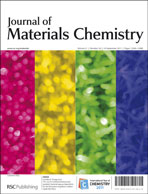Facile secondary-template synthesis of polyaniline microtube array for enhancing glucose biosensitivity
Abstract
Polyaniline (PANi) microtube arrays were synthesized by a secondary-template (fir wood and ZnO microtube array) method and confirmed by


 Please wait while we load your content...
Please wait while we load your content...